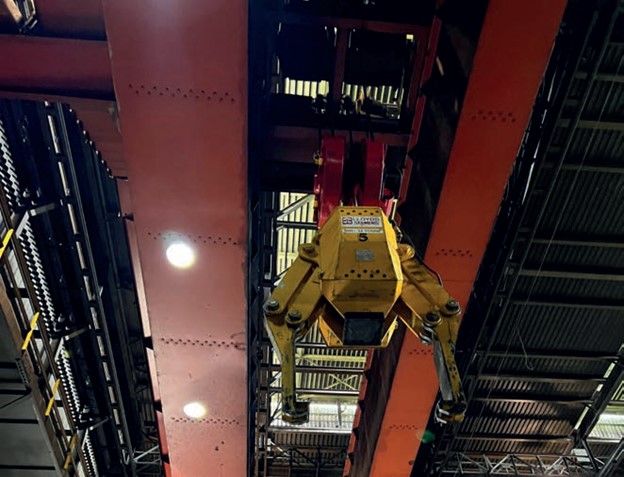Considerations For Crane Upgrades
21 February 2024Andy Swann, business development manager for cranes and power transmission at cranes specialist CP Automation, explores the ins and outs of upgrades.
The scope of industrial cranes is extensive – large gantry cranes can be used in warehouses, harbours and shipyards, where they help to load and unload containers. In my 26-year career, I’ve seen the industry change significantly and operators now require more than ever from their materials handling equipment to keep up with demand.
IMPROVING SAFETY
Cranes pose a significant risk in factories, harbours and other industrial settings. Even a small crane weighing, say, 20t, can experience a pendulum effect and a swaying load when stopped. Mismanagement can result in surrounding people being injured, as well as equipment being damaged. As well as this, rigging equipment is often designed for static rather than dynamic loads, which can put the system under added strain.
Even if an operational crane is decades old, there are things operators can do to bring them up to date with the latest safety standards. For example, retrofitting variable speed drives (VSDs) with hoist-specific software, rather than integrating generalpurpose drives can help improve operator control over motion. To illustrate this, crane specific drives series from our suppliers come with a series of safety features, including safe torque off, and an anti-sway control software.
Additional safety measures include fitting limit switches to prevent the overtravel of the crane. The limit switch is operated by contact with the crane hook block and, when activated, it interrupts power to the lift motor. Limit switches are also incorporated in similar ways for the crane’s travel motions. As well as this, wireless transmitters and receivers allow operators to remove themselves from the environment where the crane is operating.
RETURN ON INVESTMENT
The upfront capital that comes with purchasing a crane – even a second-hand one – is a large investment, so any future upgrades must provide satisfactory returns in an acceptable payback period. When making any upgrades, a good partner will provide the full picture. Recently, we supplied an international steel manufacturer with a MagnePulse DMC Series 2 Digital Magnet Controller to help improve crane safety and efficiency. We calculated the cost of their energy usage combined with the cost of the labour and spare parts. From this, we could compare what the digital controls would actually consume and communicate back to the customer.
Rather than just an initial investment, it helps to understand what the longterm savings from an upgrade will be. For instance, we calculated that, in the first year, our customer would save around £360,000 in energy and labour costs. This would be sustainable over the next few years, delivering further value.
TECHNICAL SUPPORT
If a fault is found during a visual inspection, the right partner will interrogate the problem to find patterns that will determine the cause. Using this information, they can either implement mitigation measures themselves or recommend a particular system or corrective action.
Sometimes, crane businesses will already have an idea of what they want to achieve from their upgrade and, if so, this will require a conversation between the equipment owner and customer. It usually starts with a discussion around the challenges and how objectives can be achieved. For instance, if a temporary shutdown is required, businesses can time this with expected lead times for replacement parts to minimise disruption.
Retrofitting VSDs to 60-year-old Matterson cranes and allowing a fleet to run at the same speed is just one example of how upgrades can benefit businesses and operators. Working with a dedicated crane partner can help companies get the technical support they need throughout their equipment’s lifecycle and ensure compliance.

